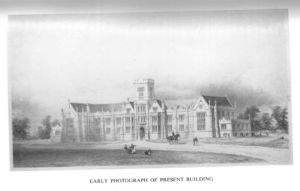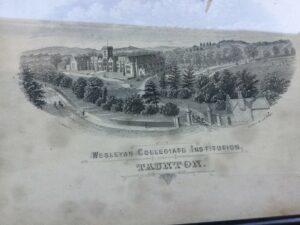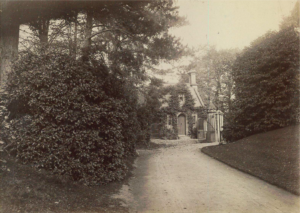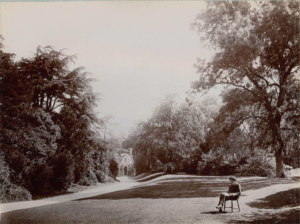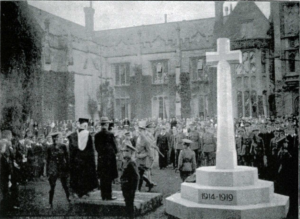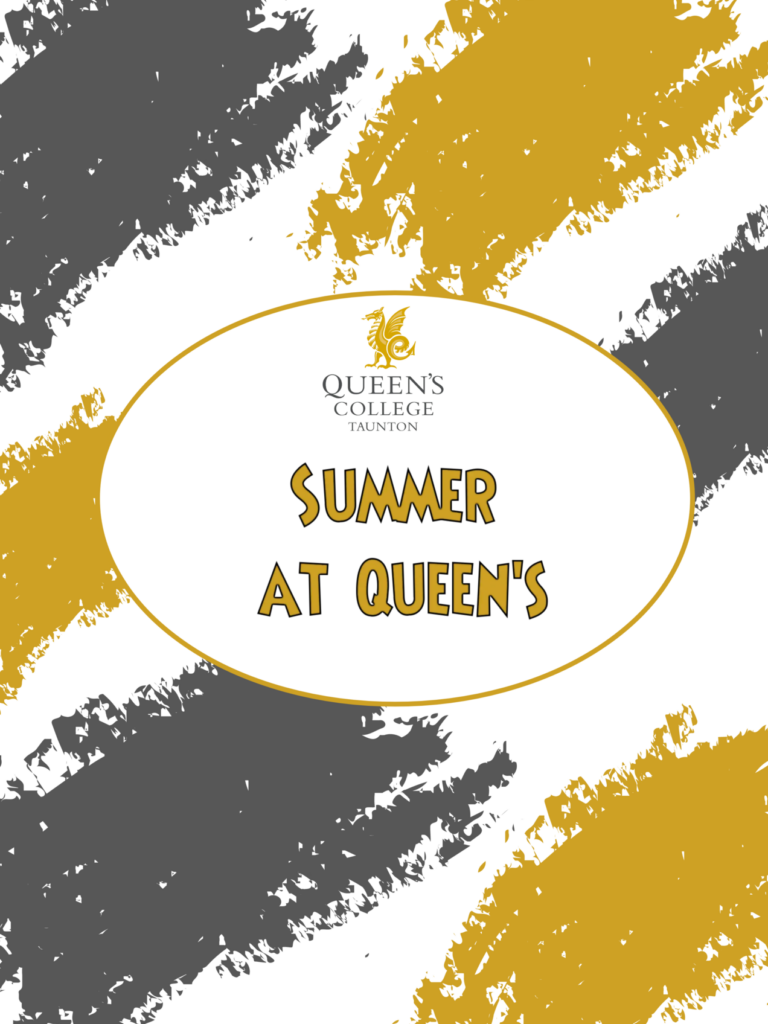Within one year of the school opening in 1843 at Castle House in town it was clear that the premises were too small as the number of pupils had risen from 34 when it opened to over 100. At a meeting in October 1844 it was agreed that the governors Ray, Barnicott and French should enquire after premises that would be suitable for the school. Early the following year they offered Mr Templeman £200 per acre for a field of six acres he owned on Trull Road. With the land secured plans for the new school were made.
A budget of £6,000 was allocated for the new building. The architect was James Wilson whose design mimicked the late Domestic Tudor style. The contractor was Mr John Mason who had won the tender with a bid of £5,795. The works began in November 1845 and by April of the following year the basement of the new building was almost complete. On Easter Monday, 13 April 1846, the foundation stone was laid with great ceremony carried out in front of all the pupils who had processed from Castle House to the new site. There were speeches and a dedication of the building. To this point, progress had been swift but given the scale of the project it is not surprising that when the school opened for the start of the academic year in the summer of 1847, the building was not fully finished.
The picture of the completed building is how it looked in the 1850s (and possibly till the 1860s) when the dust had settled and the lawn and shrubs were maturing. The next photo shows the site in the late 1870s. Two features indicate its later age: the raised lawns either side of the entrance and the flagpole on the tower, neither of which are on the earlier photograph. The clock, placed in the tower in 1862 at a cost of £38, appears to be in place on this photo. This later photo is interesting for two other details.
The lodge is shown at the entrance from Trull Road. Two other photos provide a clearer definition of the lodge. One was taken in 1888 and the other at the turn of the 20th century. The school porter occupied this charming cottage and it was in use until December 1960. The last occupant was John Brown who had served the school for 50 years. The previous occupants were Mr and Mrs William Bond who had served the school since it opened on this site in 1847, he as the head gardener. He had other skills including that of cook and confectioner. It was the latter, no doubt, that explains why his wife took charge of the first tuckshop from 1885 which was initially based in the lodge. Over the years the sound of horses’ hooves plodding past were replaced with the mechanical noises of the motor car. The sedate pace of life before the advent of the car is shown in these pictures. The picture showing the school and the lodge also includes what is known as the Upper purchased in the late 1870s.
At the opposite end of the front of the school is the Headmaster’s house, built in 1957 and known as ‘Wyvern House’ since 2019. Originally, the garage was adjacent to the house which was subsequently converted into a room of the house, and a garage was built in its present position. There have been extensions over the years, notably to the right side and at the back of the house. Before the house was built headmasters either lived in the school or their own property. C.L. Wiseman did both. He bought ‘Raveley’, the house directly behind ‘Wyvern House’ in 1946 in anticipation of it being the family home for him and Irene Savage whom he married on Christmas Day that year. On his retirement in 1953 the headmaster offered the school the chance to buy it for his successor but the governors decided not to.
A prominent feature of the front of the school is the stone cross on the lawn opposite the main entrance. This was unveiled on 4 November 1921 on Speech Day by Brigadier-General Owen Spencer Watkins. The photo shows the Queen’s College Cadet Corps on parade for the occasion. The cross was part of the memorial to the former pupils of the school who had served and in many cases died in the Great War. Made of clipstone, the cross is suitably modest in size, marked only by the dates of the war. It is one of only a few WWI memorials that give 1919 as the end date of the war, acknowledging the Treaty of Versailles as the point at which the war was concluded. In fact, this is rather appropriate as one OQ, G.B. Dallas, died at Bolshoi Ozerki during the Russian civil war in 1919 which the foreign armies supporting the Whites regarded as an extension of the Great War.
Though many hoped the Great War would be the war to end all wars, 20 years later the UK was once again at war with Germany. As previously, OQs fought and died in the conflict and to mark their service the dates of this conflict were inscribed to one side of the base. Every year since 1919, the school body has assembled on the lawn to remember those who died in all wars in which OQs have died since 1914. The nature of the act of remembrance has changed over time. Once, former pupils who returned for the service used to stand between the two columns of current pupils organised in their houses. Then, the service was held on the Remembrance Sunday though, now, it is on the 11th day of November if that falls on a weekday or the nearest weekday to it if the 11th is on a weekend. In recent years, individual crosses marked with the names of each OQ who has died in war since 1914 is planted into the lawn by the pupils to remain for a suitable period as sentient reminders of the sacrifice made by OQs. This gesture is a way of connecting current pupils to former pupils of the school, expanding their awareness of the history of the place.
In this respect, the lawn is hallowed ground. Yet, at other times of the year, and rightly so, the area has been used for different purposes. In the inter-war years and into the 1950s a gymnastic display was performed at Speech Day. Today, so well-kept is the grass, croquet is played. On many occasion, a tea party or social gathering has been held on the lawn. This all signifies the continuity of life at the school and change over time.









